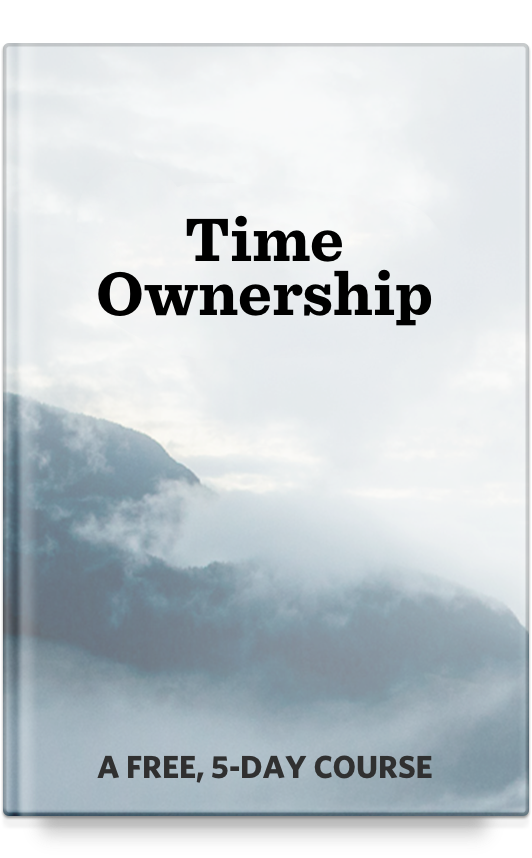Margin is an essential ingredient for healthy living, and a foundational mindset to living with margin is embracing trade-offs.
The moment you and I wake, we are faced with endless decisions — from trivial to monumental — as simple as what we will wear, or as complex as the house we’ll buy and where we’ll live.
While some decisions are harder than others, all share one common principle: every decision is a choice. Or said another way, every choice is a trade-off.
In choosing one thing, we deny another. Life is full of trade-offs, and if we are to live with margin, we must accept these trade-offs.
1. Margin is Embracing Trade-offs
Margin is about living within our limitations and recognizing we have a finite capacity. We can’t do it all. Embracing trade-offs is to acknowledge our limitations.
One of the greatest challenges to living with margin is making seemingly simple choices that have multi-faceted implications, such as:
- The invitation to a social outing that conflicts with a commitment you made to yourself.
- Working late to appease your boss or leaving on time to be home for dinner with your family.
- Choosing to go to bed early so that you can get a few minutes to yourself before the day begins.
If we hope to restore margin in our life, we have to become quite comfortable with making trade-offs.
2. You always have a choice
It’s important to start with the power of a choice.
Embracing a trade-off mindset empowers you to find a choice in every situation. There is always more than one option.
When you feel stuck and torn between two options, look for the creative third.
Usually, the challenge is that we have too many options and must whittle down our list. But even in the circumstances in which we feel there are no options, there is always a choice.
The ability to choose cannot be taken away or even given away—it can only be forgotten. — Greg McKeown, Essentialism
Sometimes the decision is choosing which problem you’d rather have. Or, choosing who you’d rather disappoint.
Making hard decisions is about owning the outcome.
3. Indecisiveness is a choice
When we refuse to make a decision, we’re allowing someone else to make the decision for us.
Chances are, they are not going to decide based on the things that matter deeply to us.
When we don’t purposefully and deliberately choose where to focus our energies and time, other people—our bosses, our colleagues, our clients, and even our families—will choose for us, and before long we’ll have lost sight of everything that is meaningful and important. We can either make our choices deliberately or allow other people’s agendas to control our lives. — Greg McKeown, Essentialism
Passivity related to decision making is to let our life be dictated by others. When we surrender are ability to choose, we surrender the outcome of our life.
It’s like a sailboat in the middle of the ocean never letting out the sail or manning the rudder.
Margin requires a proactive approach. Making trade-offs is part of going on the offensive.
4. Say No
The answer to opportunities is often simply, “No, thanks.” We can’t possibly say yes to all the invitations we receive.
But “No” is an action. It’s an acknowledgement of the trade-off and a decision that you will not compromise on something.
As you evaluate an option, think about the single-most important criterion for that decision, and then simply give the option a score between 0 and 100. If you rate it any lower than 90 percent, then automatically change the rating to 0 and simply reject it. — Greg McKeown, Essentialism
No makes time. Yes fills it.
5. “Go Big”
As we become more comfortable with wrestling through trade-offs, it empowers us to go big on decisions we say yes to because we know the cost.
Instead of giving a blind or unconvincing yes, we are able to be all in after we’ve weighed the options and outcomes.
By taking an offensive approach to decision making, others will respect our word and commitments. They’ll know that when we say yes, we truly mean it.
And hopefully conversely, when we have to decline, it’s with good reason.
We have to actively choose who we aren’t going to respond to, who we’re going to let down, and who we’re going to make angry. And we have to be OK with that, even though as humans we don’t really like letting people down. — Jocelyn K. Glei, Offscreen Magazine Issue 19
6. Make Hard Decisions Based on Your Values
There’s still one deeper layer of trade-offs we need to explore: recognizing trade-offs is one thing, but what are your decision-making criteria?
How will you ensure that you don’t make the wrong trade-off?
We need something more grounded than our intuition or emotions to help guide our decision making, and this is where your values come into play.
The things that make you uniquely you is what you value, and this is also why the expression of margin will look vastly different from person to person.
Don’t leave trade-offs to chance. There should be alignment between what you value most and what you commit to.
Hero image by Nastuh Abootalebi via Unsplash.
